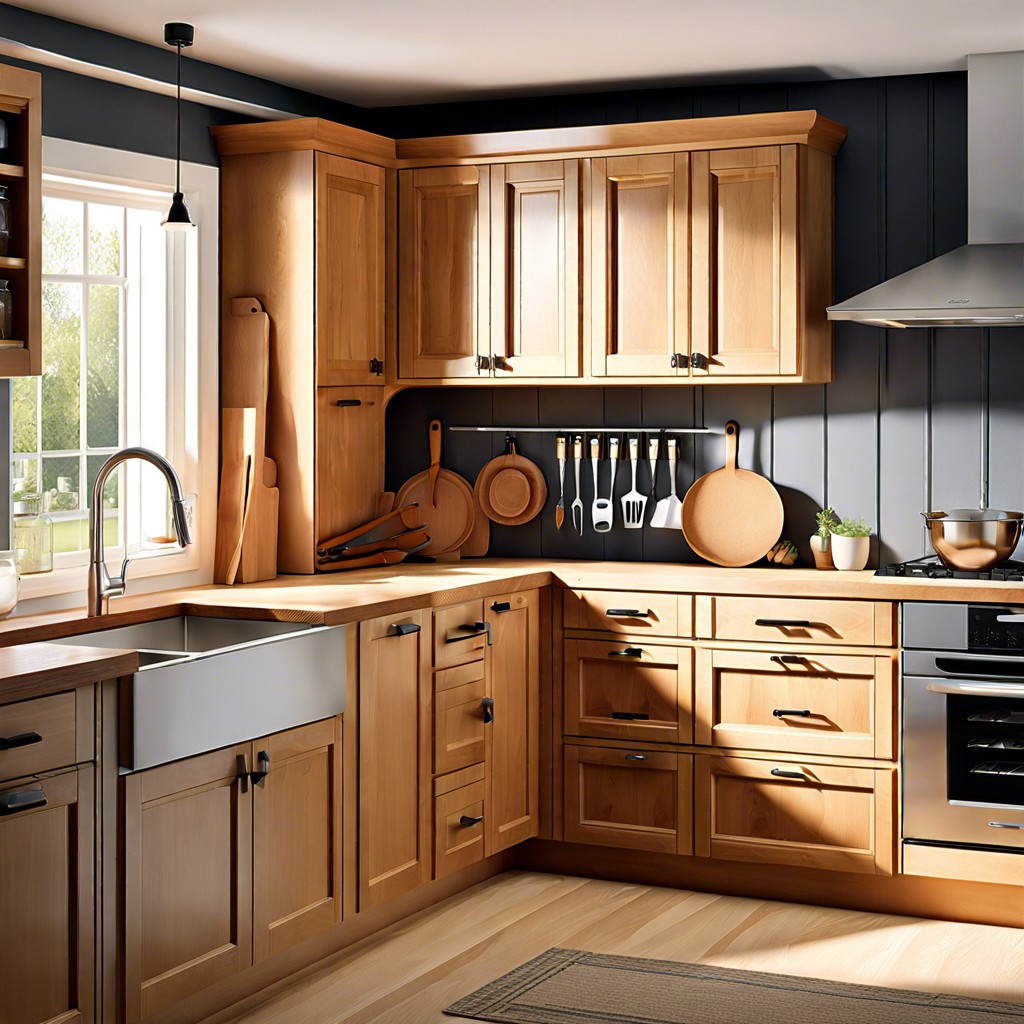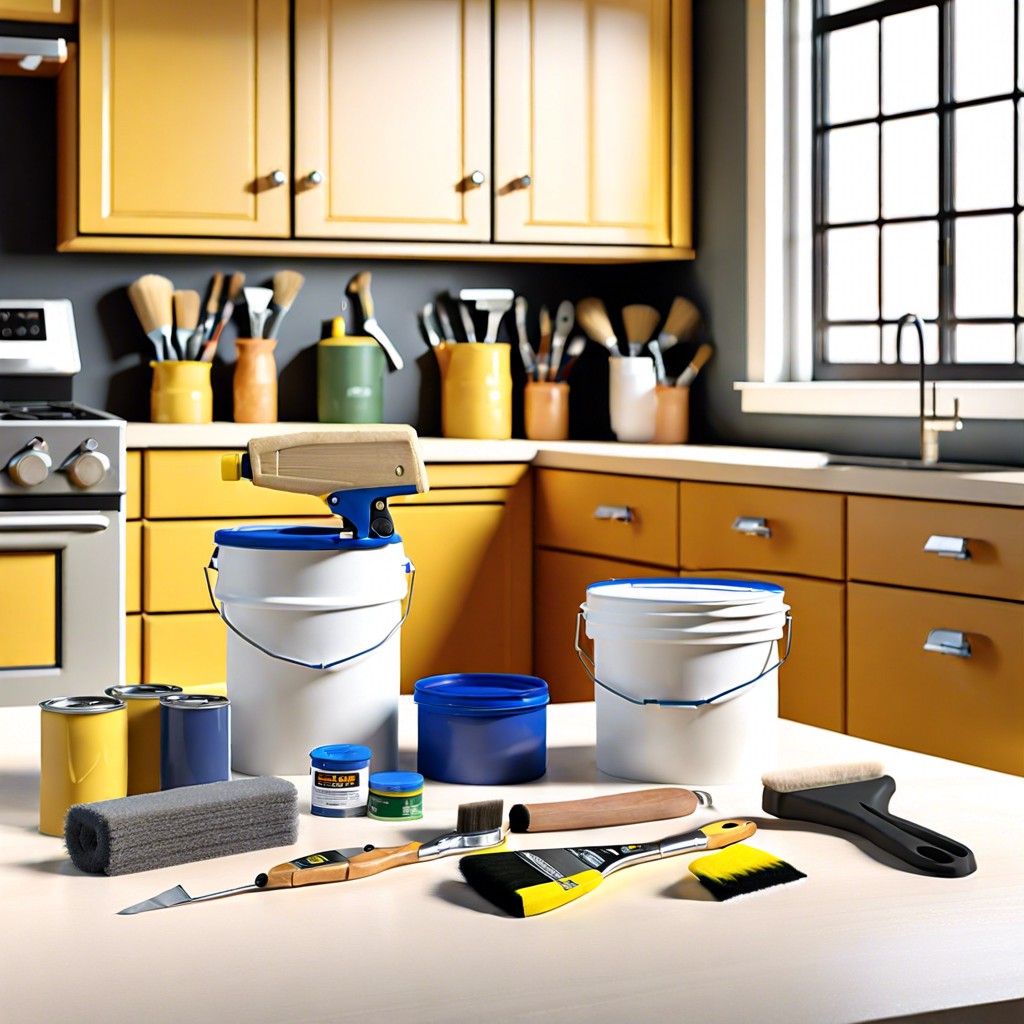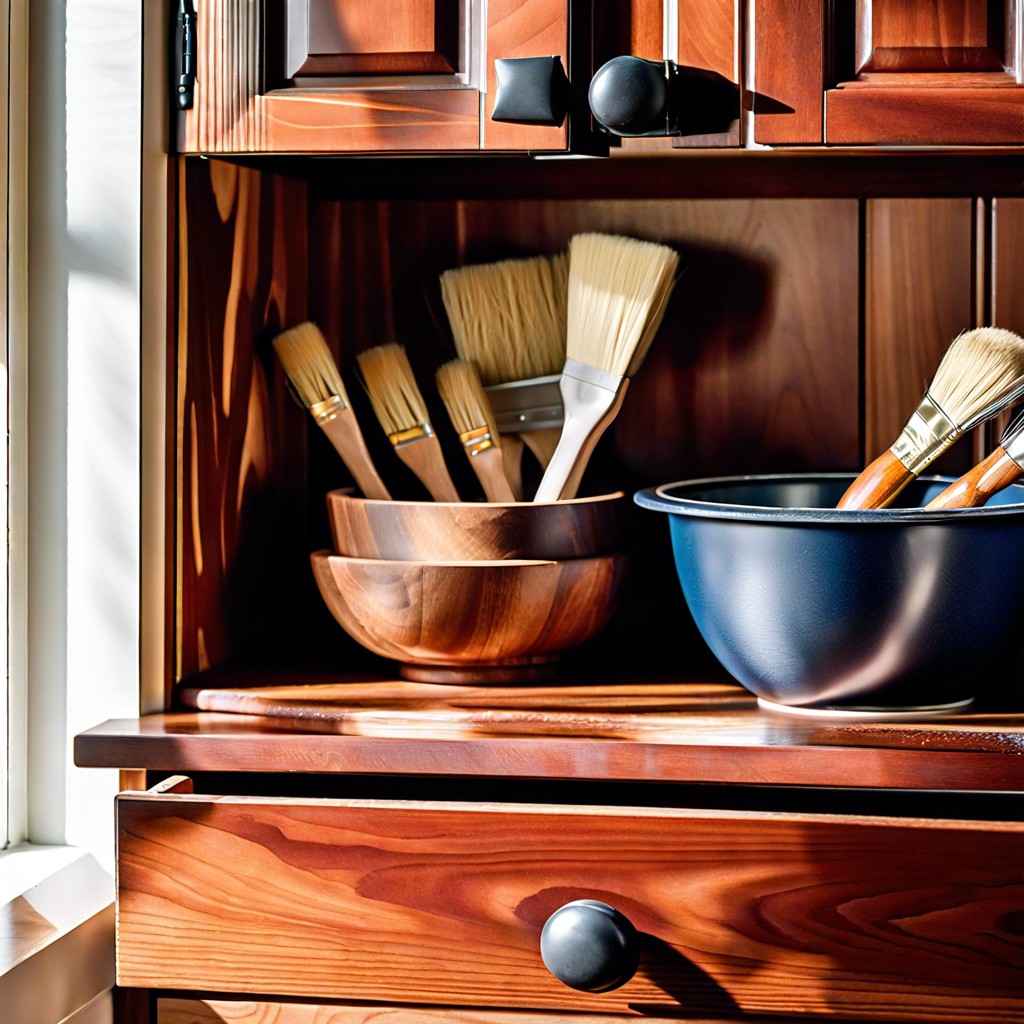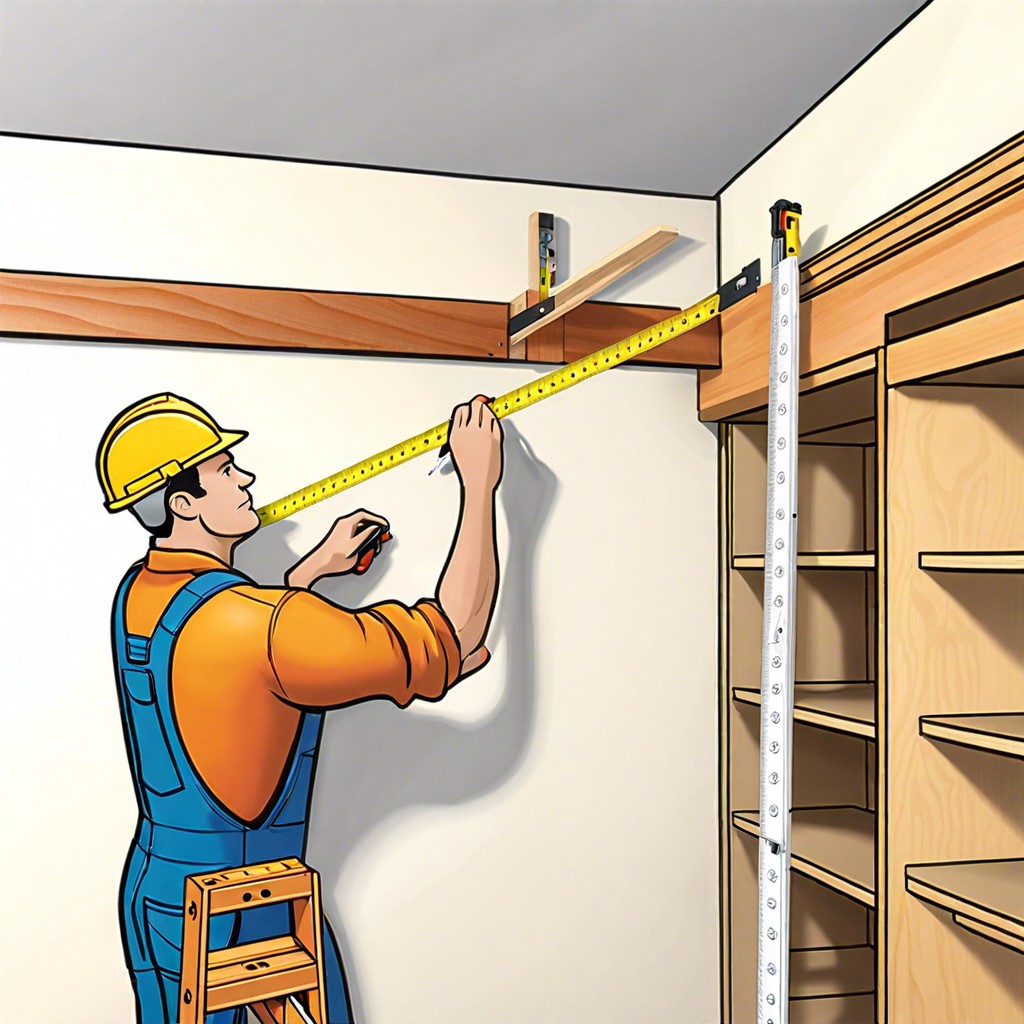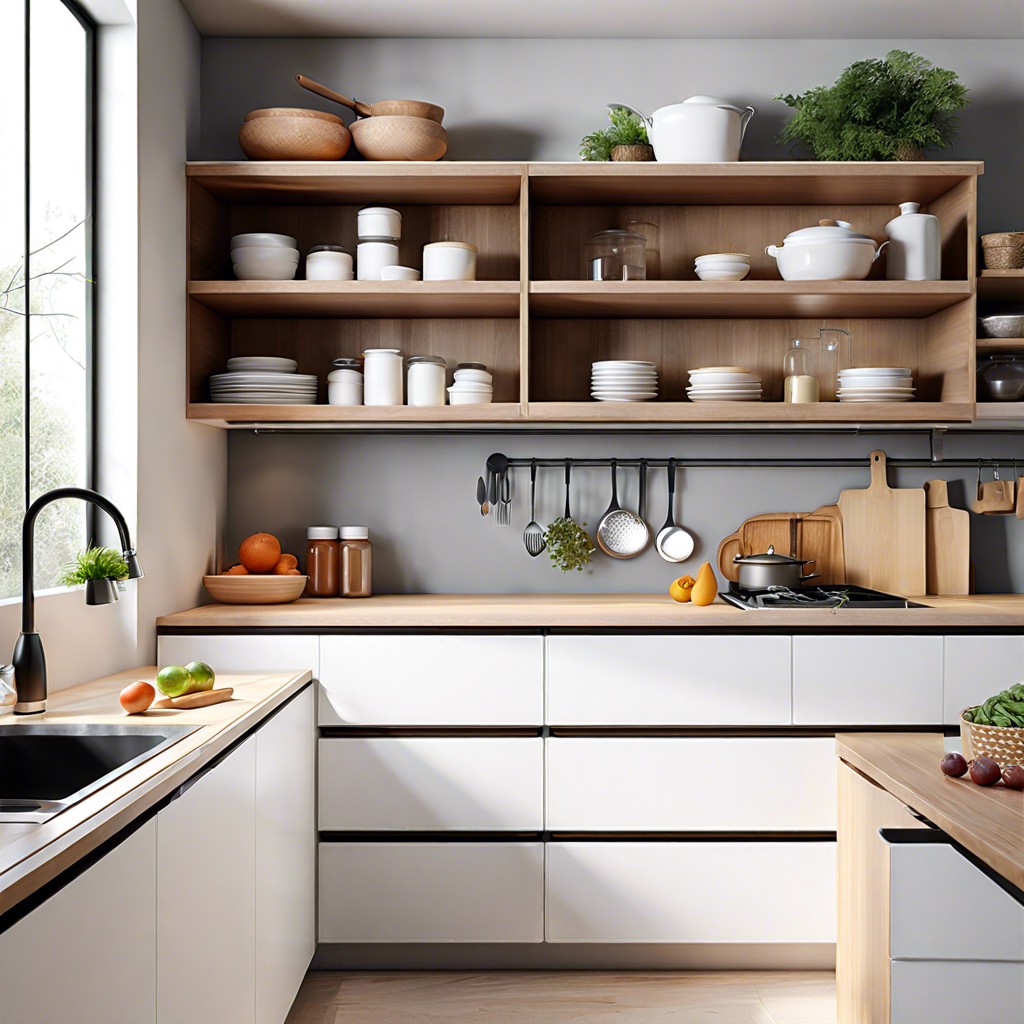Last updated on
Unravel the intricate world of cabinetry as we delve into an insightful comparison between shaker and traditional cabinets, because understanding their unique features can transform your kitchen into a masterpiece of function and style.
Key takeaways:
- Shaker cabinets: Minimalist design, timeless appeal, versatile and easy to clean.
- Raised panel cabinets: Classic elegance, durable, hide marks and dents better.
- Aesthetics: Shaker is clean and contemporary, raised panel is ornate and traditional.
- Installation: Shaker is simpler, raised panel requires more precision.
- Cost: Shaker is generally less expensive, raised panel can be pricier.
What's Inside
What Are Shaker Style Cabinets?
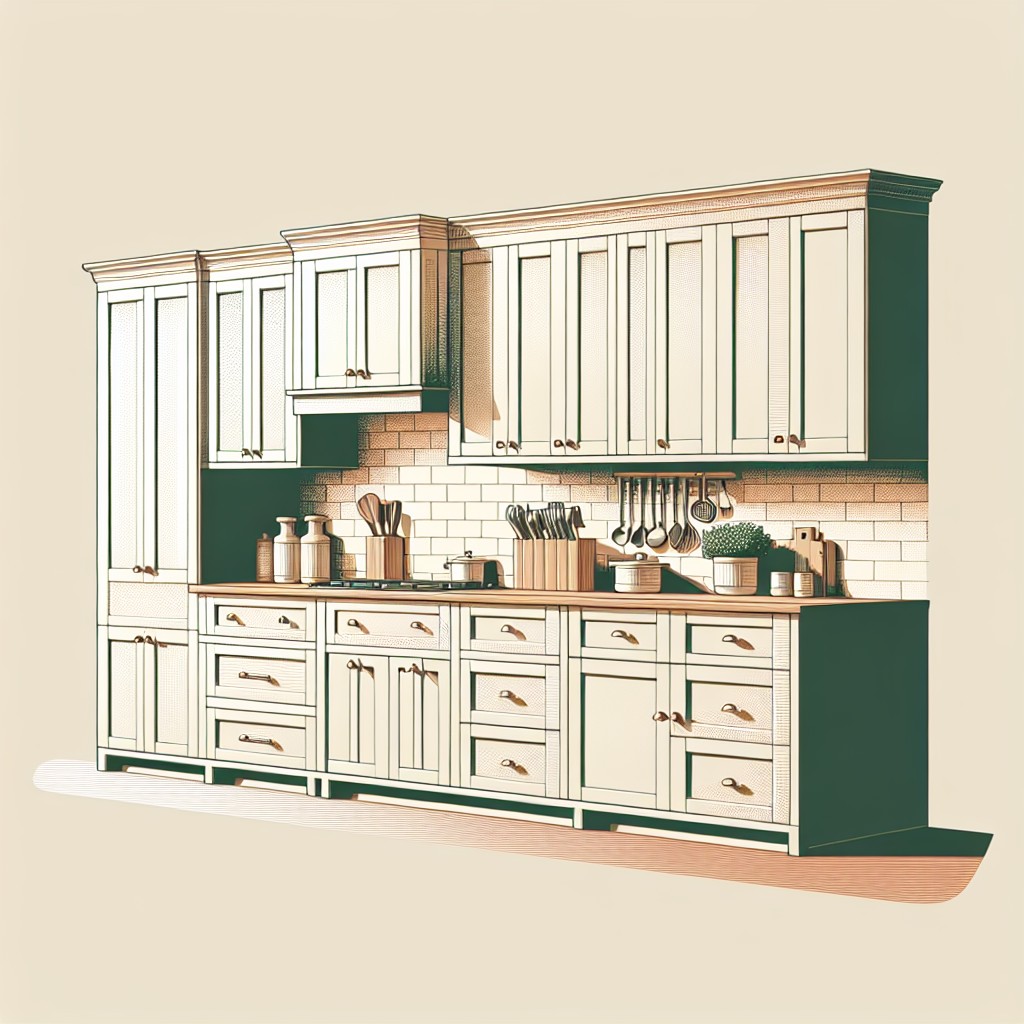
Originating from the simple, utilitarian designs of the United Society of Believers in Christ’s Second Appearing, more commonly known as the Shakers, these cabinets reflect the principles of their creators: function, cleanliness, and quality.
Characterized by a five-piece door with a recessed center panel, Shaker style exhibits a minimalist form that places emphasis on practicality and durability.
The frame is typically made of sturdy hardwood and the simple lines ensure Shaker cabinets can blend seamlessly into both contemporary and traditional kitchen designs.
Their versatility makes them a popular choice for homeowners seeking a timeless kitchen aesthetic.
The simplicity of the design also allows for a range of hardware choices, from vintage knobs to modern handles, offering a customizable look that can be tailored to individual preferences.
In terms of finish, Shaker cabinets are often painted, stained, or left in a natural wood finish, allowing for a breadth of color options to suit any color palette.
Shaker Cabinets Pros
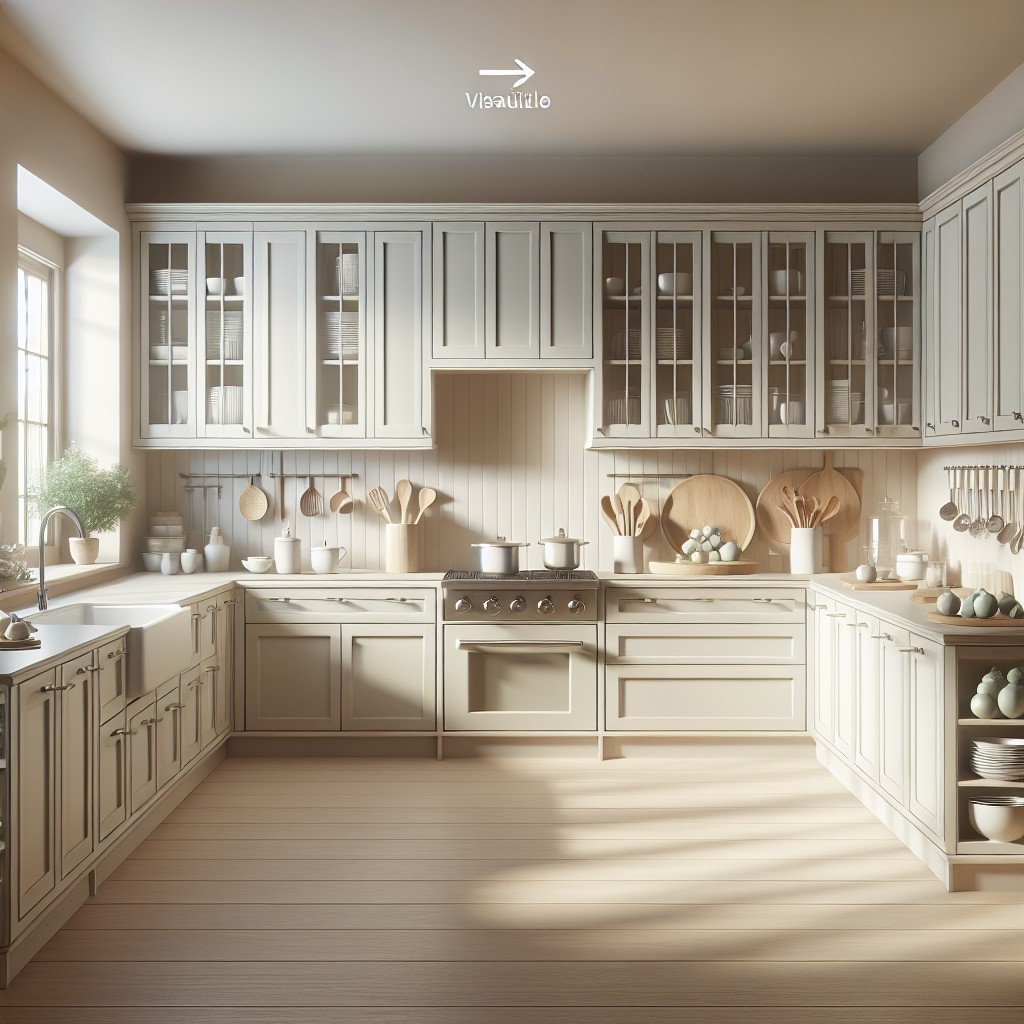
Simplicity meets versatility in Shaker style cabinets; their minimalist design features clean lines and flat panels that lend a timeless appeal.
This adaptability allows them to complement various kitchen styles, from modern to traditional.
Additionally, the straightforward construction not only adds to their elegant look but also contributes to their durability.
The less ornate design means fewer nooks and crannies, making them easier to clean and maintain.
Not to mention, the simplicity can translate to cost savings, as they often require less material and labor to construct compared to more intricate cabinet designs.
With a focus on practicality, Shaker cabinets offer ample storage space, ensuring functionality remains at the forefront of your kitchen’s design.
Cons Of Shaker Style Cabinets
While Shaker style cabinets are beloved for their simplicity and versatility, they do have a few drawbacks. The minimalist design may not suit those who prefer ornate or more detailed aesthetics. In spaces demanding a more traditional or luxurious feel, they might feel too plain or modern.
Another consideration is the potential for dirt and debris accumulation in the recessed panel area. The simple frame can collect dust and oils, requiring regular cleaning to maintain their crisp appearance. Care is especially needed in high-usage areas like the kitchen.
Over time, the wood panels may contract or expand due to changes in temperature and humidity, potentially leading to cracks in the paint at the joints. This means that although typically low-maintenance, they may occasionally need more upkeep to keep them looking their best.
Lastly, due to the popularity of Shaker cabinets, some may perceive them as too common or lacking uniqueness, which could be a deterrent for those wanting to make a distinctive design statement in their home.
What Are Raised Panel (Traditional) Cabinets?
Raised panel cabinets exude classic elegance, with a profile that includes a raised center panel surrounded by a contoured frame.
This three-dimensional design creates depth and richness, often featuring intricate detailing like bevels or moldings.
Known for their ornamental flair, these cabinets lend a sense of formality and traditional charm to any kitchen.
The craftsmanship involved can showcase the natural beauty of the wood grain, and the variety of stains and finishes available allow for customization that fits seamlessly into many decor styles, from the stately to the cozy.
Raised Panel Cabinets Pros
Raised panel cabinets boast a timeless elegance that adds depth and detail to any kitchen. Their classic design features a center panel that is raised above the surrounding frame, creating a distinct, sophisticated look. This style is particularly versatile, fitting seamlessly into country, traditional, and even more formal settings.
The solidity of their construction is another advantage, often being made from solid wood, which translates into durability and longevity. With raised panel cabinets, you have the freedom to experiment with various finishes and stains, making it easier to tailor them to your kitchen’s theme.
Moreover, the intricate detailing of raised panels can hide marks and dents better than flat surfaces, making them a practical choice for busy homes. Lastly, as a tried-and-true choice, these cabinets have a proven track record of maintaining their appeal, which can be beneficial for resale value.
Raised Panel Cabinets Cons
While raised panel cabinets offer a classic and ornate look, they come with some considerations that may sway your decision. The intricate designs and mouldings can accumulate dust and grease, making them more challenging to clean than their shaker counterparts.
Moreover, because of their detailed nature, refinishing or repainting them involves more effort and may require a professional touch to preserve the ornamental elements. In smaller spaces, the depth and detail of the paneling might overwhelm the room, making it feel more confined.
Additionally, if your aesthetic preference leans towards modern or minimalist, these cabinets could clash with your envisioned decor, as they are more traditional and less versatile when it comes to blending with contemporary styles.
Differences Between Shaker Style Cabinets Vs Raised Panel Cabinets
When distinguishing between Shaker and raised panel cabinets, the following points clarify their fundamental contrasts:
- Aesthetics and Design: Shaker cabinets are recognized for their minimalistic, clean lines featuring a flat, recessed center panel and square edges, often with no bevel on the frame. In contrast, raised panel cabinets exhibit a more ornate and traditional look, with a center panel that is elevated and often detailed with contours and bevels.
- Installation: The simplicity of Shaker cabinets often makes for a more straightforward installation process compared to the more intricate raised panel doors which may require additional time and precision during fitting.
- Cost: Generally speaking, Shaker cabinets might be less expensive due to their simpler design, which often requires less material and labor to produce. Meanwhile, raised panel cabinets can be pricier because they often feature more complex designs and detailing, which can increase manufacturing costs.
- Maintenance: The flat surface of Shaker cabinet doors makes them easier to clean and maintain, as there are fewer crevices for dirt to accumulate. Raised panel doors, with their detailed moldings and ridges, might require more effort to keep clean.
- Resale Value: Whether Shaker or raised panel cabinets will contribute more to resale value can depend on current trends and the style of the home. Shaker cabinets often appeal to those seeking a modern and timeless aesthetic, while raised panel cabinets can be a draw for buyers looking for a traditional and classic kitchen feel.
Aesthetics And Design
Shaker cabinets epitomize simplicity and minimalism with their hallmark flat-paneled doors and rail frames, exuding a clean, uncluttered look. This aesthetic champions function, featuring basic hardware and natural materials that blend seamlessly with a variety of kitchen designs from modern to traditional.
In contrast, raised panel cabinets offer a more ornate and classic appearance. The center panel is elevated and the intricate details, often including bevels and contours, create shadow effects and a sense of depth. They are typically associated with more formal, traditional kitchens and can add a touch of elegance and timelessness.
The choice between the two styles can significantly influence the overall vibe of a kitchen – Shaker cabinets lend themselves to a more understated, contemporary mood, while raised panels suggest a more luxurious, classic atmosphere. Selecting the right design hinges on personal taste and the desired aesthetic for the heart of the home.
Installation
When it comes to the ease of installation, Shaker-style cabinets often edge out traditional raised panel designs. The simplicity inherent to Shaker construction means fewer intricate details to work around, which can streamline the process for professionals and DIY enthusiasts alike. With cleaner lines and flat panels, Shaker cabinets are less cumbersome to handle and can be installed more quickly, potentially saving on labor costs.
Raised panel cabinets, with their more detailed and contoured designs, may require additional steps and precision during installation. This can translate to a longer time frame and increased labor costs. It’s essential to factor in these considerations, especially if you’re on a tight schedule or budget.
In either case, proper measurements and level alignment are crucial for a flawless finish, as is a well-planned layout to ensure your new cabinets function beautifully in your space. Whether you opt for the timeless simplicity of Shaker or the classic elegance of traditional cabinets, skilled installation will bring out the best in your kitchen’s design.
Cost
When comparing shaker and traditional raised panel cabinets, budget plays a crucial role. Generally, shaker cabinets are more cost-effective due to their simple design requiring less elaborate craftsmanship and fewer materials. On the other hand, traditional cabinets involve more intricate detailing and thus can be pricier. However, the final cost depends on factors like material quality, customization, and whether you opt for stock, semi-custom, or custom units.
While affordability might initially sway you towards shakers, the timeless elegance of a raised panel could justify the extra expense for some. Remember, investing in kitchen cabinetry is investing in the heart of your home.
Maintenance
Maintaining your kitchen cabinets is crucial for their longevity and aesthetic appeal. Shaker cabinets, known for their minimalistic design, have a flat panel and square edges, which makes them relatively easy to clean. A damp cloth can easily wipe away any dust or spills without the need for intricate scrubbing.
On the other hand, raised panel cabinets feature more elaborate designs with crevices and detailing. While these intricacies add to their traditional charm, they can catch more dirt and grime. Cleaning often involves using a small brush or toothbrush to get into the nooks and ensure thorough cleaning.
Both types typically require similar care regarding the actual material, whether it’s wood, MDF, or another substrate. Regular cleaning, avoiding excessive moisture exposure, and prompt attention to spills will keep both shaker and traditional cabinets looking their best. However, the simpler lines of shaker cabinets might save you time and effort in your routine maintenance schedule.
Resale Value
When considering resale value, cabinetry style can be a significant factor for potential buyers. Shaker cabinets are known for their timeless appeal, which can attract a broad audience and boost home value. Their clean lines and simple design make them easily adaptable to various interior themes, ensuring that they rarely look dated.
On the other hand, raised panel cabinets may appeal more to those with traditional tastes, but could be less attractive to buyers who favor modern or minimalist styles. While they exude a classic elegance that has its own market, they may not have the same universal appeal as Shaker cabinets.
In a competitive housing market, the right kitchen aesthetic can be the tipping point for buyers deciding between similar properties. As trends ebb and flow, Shaker cabinets have consistently remained in demand, potentially making them the safer choice for homeowners who are remodeling with an eye on resale value.
Which Is More Expensive: Shaker Cabinets or Raised Panel?
When it comes to cost, the distinction between shaker and raised panel cabinets can be nuanced. Generally, shaker cabinets tend to be less expensive due to their simple and straightforward design which requires fewer materials and less intricate craftsmanship. The hardware and accessories for shaker cabinets also lean towards the more affordable end.
On the flip side, raised panel cabinets involve more detailed workmanship and typically utilize more material, which can drive up the price. The complexity of their design, featuring contours and raised panels, demands greater labor and skill. Consequently, this often translates to a higher price tag compared to the minimalist shaker style.
It’s vital to remember that the final cost can be influenced by factors such as the wood species chosen, the cabinet manufacturer, customizations, and whether you’re looking at stock, semi-custom, or custom cabinets. While shaker cabinets generally offer a modest price advantage, personalized touches and material choices can narrow or reverse this gap.
Do Shaker Cabinets Go Out Of Style?
Shaker cabinets are lauded for their timeless simplicity and enduring appeal. Their clean lines and classic design ensure they blend seamlessly with both modern and traditional decors. This versatility means they rarely fall out of favor, dodging the whims of trends that render other styles dated.
Moreover, the minimalist aesthetic of Shaker cabinets allows for a range of customization options, from hardware choices to color palettes, ensuring they stay relevant and can adapt to personal tastes and the evolving design landscapes. The consistent popularity of Shaker cabinets also suggests they’re a safe investment for those concerned about the longevity of their kitchen’s style.
Traditional Kitchen Cabinet Design Considerations
When selecting traditional raised panel cabinets, consider the sophistication and timeless elegance they bring to a space. Their detailed moldings and intricate designs serve as focal points, lending a sense of depth and luxury. These cabinets often feature rich wood tones and can pair well with ornate hardware for a classic look.
One must also think about the room’s overall style. Traditional cabinets complement formal, antique, or rustic kitchen designs. They’re especially suitable for larger kitchens where their elaborate patterns won’t overwhelm the space.
Durability is another factor, as the robust construction of these cabinets often means they can withstand years of use. However, the detailed crevices may require more meticulous cleaning to maintain their appearance.
Finally, when integrating traditional cabinets into a kitchen, it’s worth considering the current trends towards minimalism and modern lines in design. While these cabinets exude an enduring appeal, ensure that they align with your personal style preferences and the home’s architectural design to create a cohesive aesthetic.
FAQ
Are shaker cabinets better?
Shaker cabinets are highly favored due to their timeless aesthetic, superior craftsmanship, impressive hardware, and stunning finishes that elevate a kitchen’s appearance.
Are Shaker cabinets cheap looking?
Shaker cabinets, when properly painted and finished to complement the wood and overall decor, exude a sophisticated style rather than appearing cheap.
Are Shaker-style cabinets outdated?
Shaker-style cabinets are not outdated due to their flexible designs that can adapt to various styles, making them timeless and dependable fixtures in any home.
Are Shaker cabinets still in style 2023?
Yes, in 2023, Shaker cabinets, with their versatility and elegant simplicity, maintain their status as a favored choice for kitchen styles.
What distinguishes shaker cabinets from traditional ones?
Shaker cabinets are distinguished from traditional ones by their characteristic five-piece door with a recessed center panel and simple, clean lines.
How do Shaker cabinets affect overall home decor aesthetics?
Shaker cabinets, with their simple, clean lines and timeless design, can significantly enhance the overall aesthetics of a home decor, instilling a sense of order and style.
What are the maintenance requirements of Shaker-style cabinets compared to traditional ones?
Shaker-style cabinets require more regular cleaning due to their flat-panel doors attracting dust and dirt, whereas traditional cabinets, with their raised panels and elaborate details, may need more meticulous care to ensure dirt isn’t lodged in difficult-to-reach areas.
